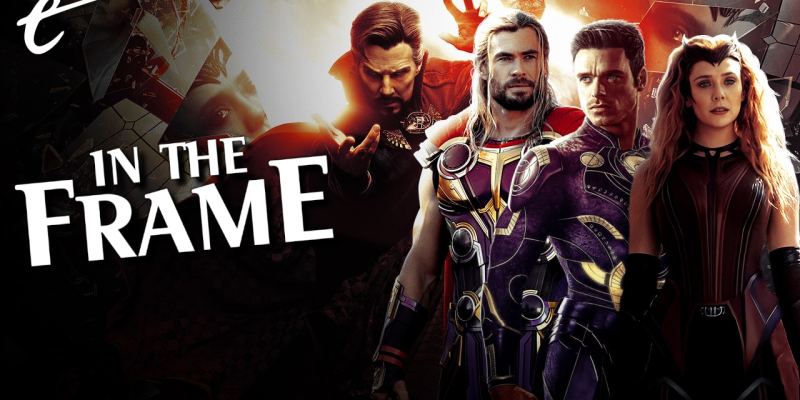This article contains various spoilers for the MCU Phase 4, most notably for Thor: Love and Thunder.
There is an interesting tension within Phase 4 of the Marvel Cinematic Universe (MCU).
Phase 4 follows the end of the so-called “Infinity Saga,” the series of movies spanning from Iron Man and The Incredible Hulk in 2008 to Avengers: Endgame and Spider-Man: Far From Home in 2019. This incredible run of movies found Marvel Studios dominating pop culture, earning strong reviews and impressive box office, while crafting a series of crowd-pleasing and era-defining superhero films. Marvel Studios grossed $5 billion in 2019 alone, setting a franchise box office record.
It might be fair to describe this run as the company’s “imperial phase,” to borrow a phrase from music journalism. It applies to the period when an artist is at their commercial and artistic peak simultaneously. As critic Tom Ewing noted, “There’s something double-edged about the concept: It holds a mix of world-conquering swagger and inevitable obsolescence. What do we know about emperors? That they end up naked: The phase always ends.”
There is an argument that the MCU is “a giant TV show,” with Avengers: Infinity War and Avengers: Endgame serving as “a season finale/series finale” to the story being told. However, while television shows end after their series finale, the MCU has not just continued, but exploded. This post-finale continuance spans about 30 hours of television and over 15 hours of movies to date, which is nearly as long as the just-under-50-hour runtime of the “Infinity Saga.”
As such, for all that Kevin Feige might tease viewers about the company’s plans for the “next saga” of the shared universe, Phase 4 has lasted long enough to merit discussion on its own terms. Indeed, there is something genuinely interesting about looking at the studio’s recent output as part of a single entity, in identifying unifying themes and recurring motifs. Taken as a whole, Phase 4 of the MCU suggests something close to a superhero midlife crisis.
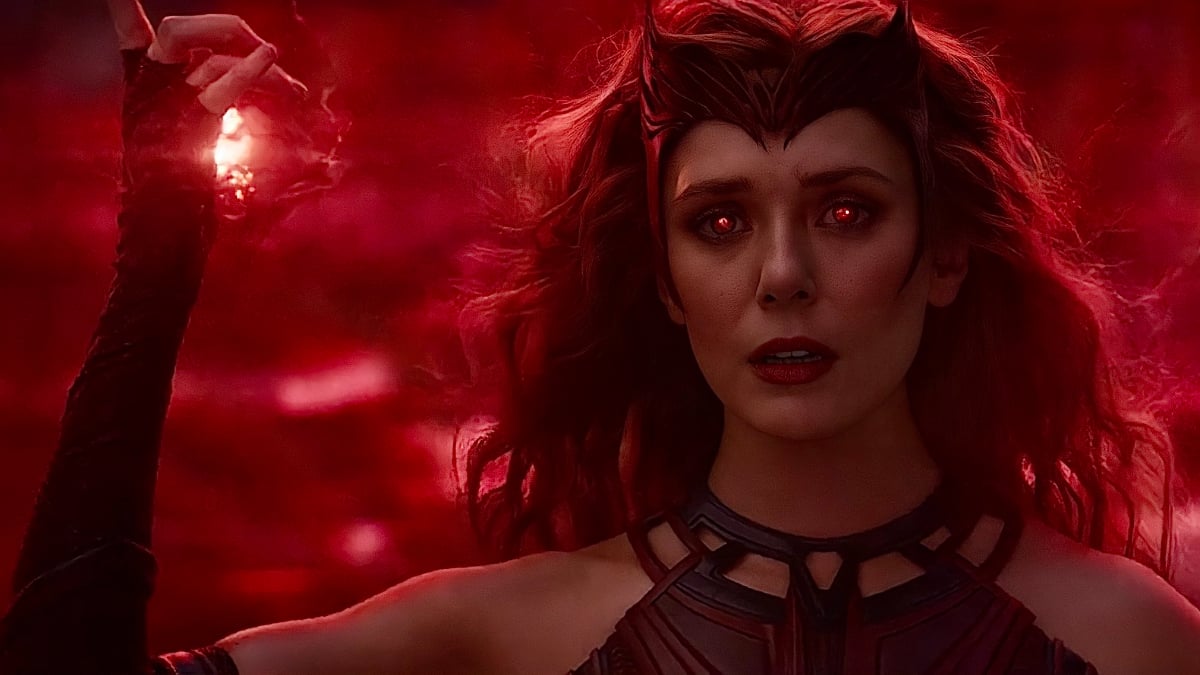
What comes after an “imperial phase”? What is left when a major studio has reshaped cinema in its own image? To quote classically educated philosopher Hans Gruber (Alan Rickman), “When Alexander saw the breadth of his domain, he wept; for there were no more worlds to conquer.” Given the failure of would-be competitors like the DC Extended Universe or the Dark Universe, the only real competitor that Marvel Studios faces is itself.
There has been much written about how the current era of the MCU “lacks direction,” and that is certainly fair. Writer Donald Richie suggested that a “midlife crisis begins sometime in your 40s, when you look at your life and think, Is this all?” The MCU is the biggest franchise in the world. Endgame was briefly the biggest film of all time. What happens when a company that successful asks, “What now?”
Befitting a post-imperial MCU, Phase 4 asks abstract questions about the brand’s identity and history. Having conquered television, WandaVision finds the MCU colonizing television in a bid to find new worlds to which it might expand. Other stories feel confined by the franchise’s history. Loki presents its protagonist (Tom Hiddleston) as a fugitive from continuity. What If…? contemplates what might have been. The Falcon and the Winter Soldier attempts to redefine Captain America (Anthony Mackie).
There are hints of introspection here, which make sense following a sprawling epic in which the heroes saved half of all life in the universe. Thor: Love and Thunder finds Chris Hemsworth reprising the role of Thor, marking the first time that an actor has headlined four films in one of the MCU’s solo sub-franchises. Allowing for the recasting of Ed Norton in The Avengers, Hemsworth is the last of the original superheroes still active in the MCU.
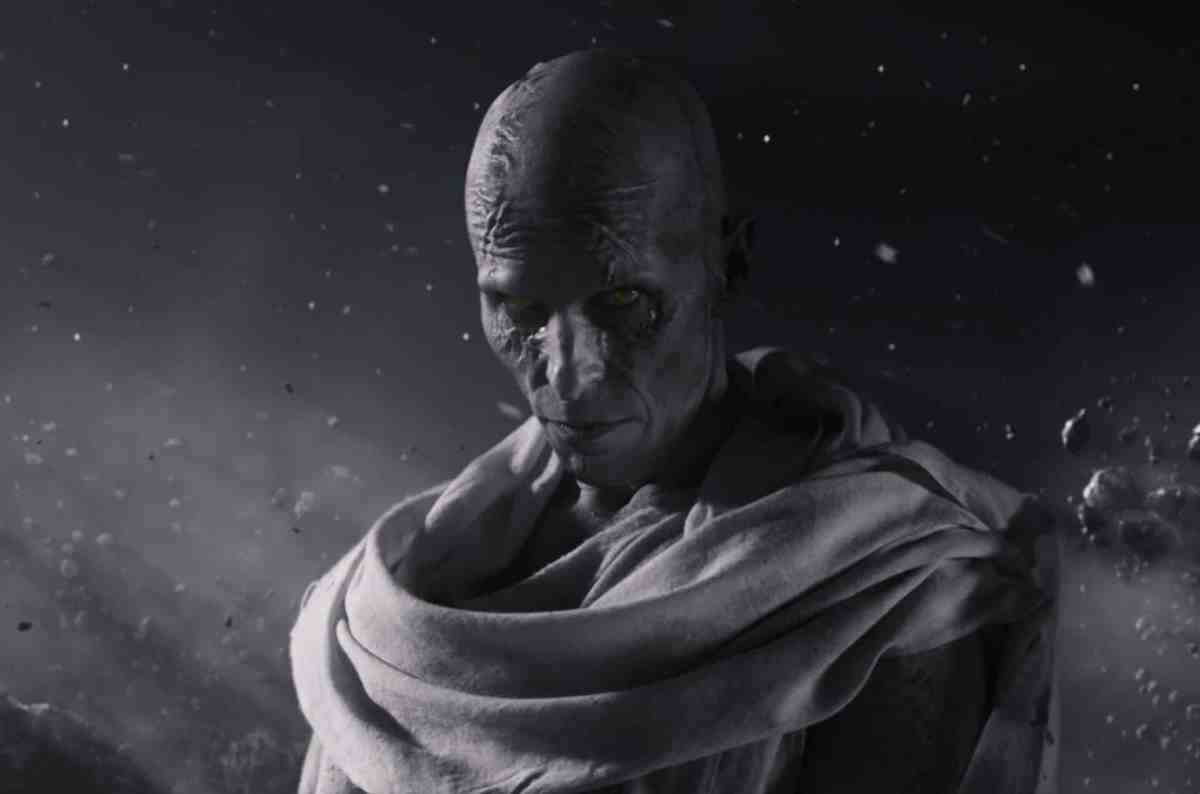
Love and Thunder finds Thor caught in a midlife crisis, an arc perhaps more clearly outlined in the movie’s teaser trailer than in the finished film. “These hands were once used for battle; now they’re but humble tools for peace,” he states. “I need to figure out exactly who I am.” It’s the sort of healthy reflection that isn’t always possible when dealing with constant alien invasions and omnicidal maniacs. It also fits with the larger tone of the films around it.
The films of MCU Phase 4 seem quite ambivalent about, and even wary of, the internal logic of superhero stories. This is perhaps most obvious in director Chloé Zhao’s Eternals, which often feels like an awkward attempt to produce a thoughtful deconstruction of superhero stories within a studio framework that has spent more than a decade trying to streamline the production of these sorts of stories. It doesn’t entirely work, but it is fascinating.
Zhao’s Eternals is archetypal in its storytelling. Its central characters are obvious analogues for the Justice League over at Marvel’s Distinguished Competition. Ikaris (Richard Madden) is obviously Superman. Makkari (Lauren Ridloff) is obviously the Flash. Thena (Angelina Jolie) is Wonder Woman. Even the way that Phastos (Brian Tyree Henry) uses constructs recalls Green Lantern. The script even explicitly acknowledges both “Batman” and “Superman.”
The movie’s structure closely resembles Alan Moore and Dave Gibbons’ classic deconstruction, Watchmen. A scattered and retired team of superheroes is reunited following the murder of one of their own, that death serving as a framing device for flashbacks charting the characters’ secret influence on human history and the murderer eventually revealed as one of their own as well. Zhao has acknowledged the influence of Watchmen and Justice League director Zack Snyder on her work, and it is very apparent.
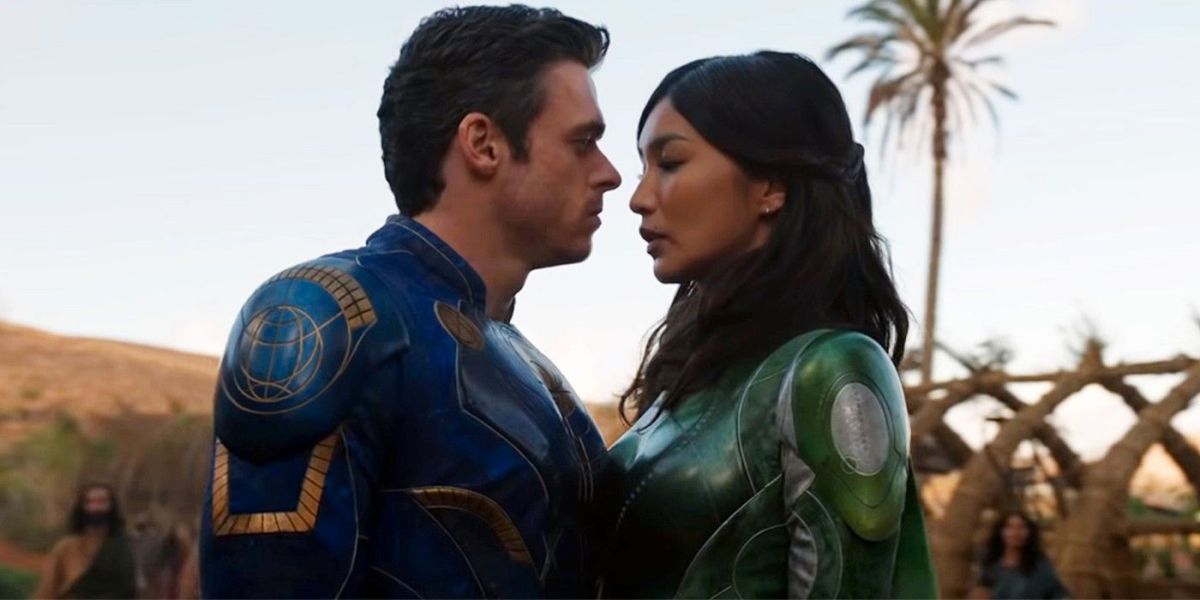
At its core, Eternals reads as a more veiled and abstract variation on the critique of superheroes made by The Boys, that modern superheroes are just agents of the status quo, representing and serving more powerful forces that are guiding the planet towards an apocalypse. Dane Whitman (Kit Harington) ponders why these immortal figures didn’t intervene in any war “or all the other terrible things throughout history?”
Ikaris is ultimately revealed as the movie’s villain, a bold move for an obvious Superman stand-in within a major superhero blockbuster. He represents superheroes as “synthetic beings” who are “incapable of evolution” by the nature of the genre, fighting to preserve what he sees as “the natural order,” even when that natural order results in billions of deaths. Eternals is a meditation on what it means to be a superhero, and it is wary of the concept.
This theme carries over to other MCU Phase 4 films. Love and Thunder introduces the character of Gorr the God Butcher (Christian Bale), a monster who travels the cosmos murdering gods. Given that superheroes have largely been read as a modern corporatized mythology, including by figures like comic book writer Grant Morrison, Gorr feels like an accusation leveled at the genre. “The only ones gods care about is themselves,” Gorr ominously states.
Love and Thunder suggests Gorr has a point. When Thor appeals to other gods for assistance, he discovers that Zeus (Russell Crowe) is more interested in planning the next orgy than saving innocent children. The casting of Crowe feels somewhat pointed here, as this “father of the gods” also played Superman’s father in Zack Snyder’s Man of Steel. Love and Thunder presents Thor as the exception that proves the rule, an actual superhero.
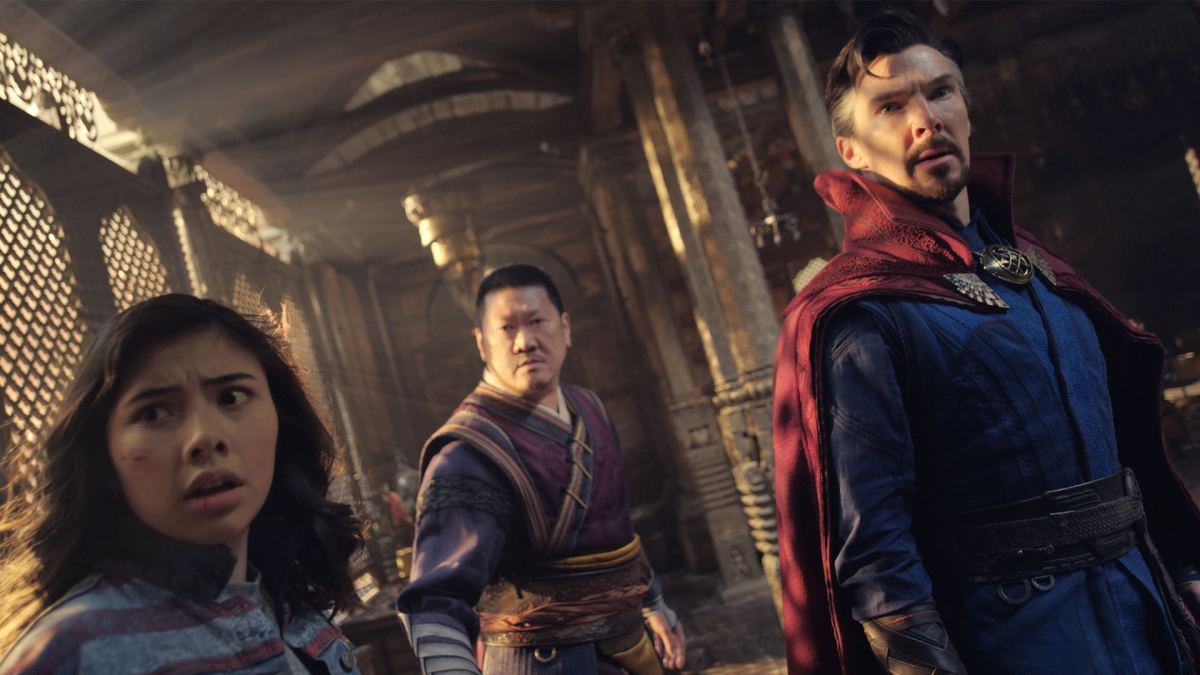
There is a similar ambivalence running through Doctor Strange in the Multiverse of Madness. Tellingly, the major villains in Multiverse of Madness are all superheroes: Wanda Maximoff (Elizabeth Olsen), two alternate versions of Stephen Strange (Benedict Cumberbatch), and the shadow cabal including Reed Richards (John Krasinski) and Charles Xavier (Patrick Stewart) that call themselves the Illuminati. The Illuminati are in their own post-imperial phase, having fought their own Infinity War.
In what feels like a reckoning, the character’s ability to evade the consequences of her actions from Avengers: Age of Ultron through to WandaVision, Multiverse of Madness presents Wanda as a monster. The film often feels like a deconstruction of the MCU’s core power fantasy, right down to its destruction of the would-be third-act MacGuffin and an ending that finds Strange urging a young America Chavez (Xochitl Gomez) to trust her own power rather than asserting his right to it.
Indeed, there is one particular subversion that runs through these three films. Many MCU franchises pair off their male leads with their female co-leads, like Tony Stark (Robert Downey Jr.) and Pepper Potts (Gwyneth Paltrow) in the Iron Man films, Steve Rogers (Chris Evans) and Peggy Carter (Hayley Atwell) in Endgame, Scott Lang (Paul Rudd) and Hope van Dyne (Evangeline Lilly) in the Ant-Man films, and even Peter Parker (Tom Holland) and MJ (Zendaya) in the Spider-Man movies.
While mileage varies in each individual case, many of these romances feel curiously perfunctory. This is particularly true when compared to those between Clark Kent (Christopher Reeve) and Lois Lane (Margot Kidder) in Richard Donner’s Superman, Bruce Wayne (Michael Keaton) and Selina Kyle (Michelle Pfeiffer) in Tim Burton’s Batman Returns, or Peter Parker (Tobey Maguire) and Mary Jane Watson (Kirsten Dunst) in Sam Raimi’s Spider-Man trilogy. MCU romances often have a sense of obligation to them.
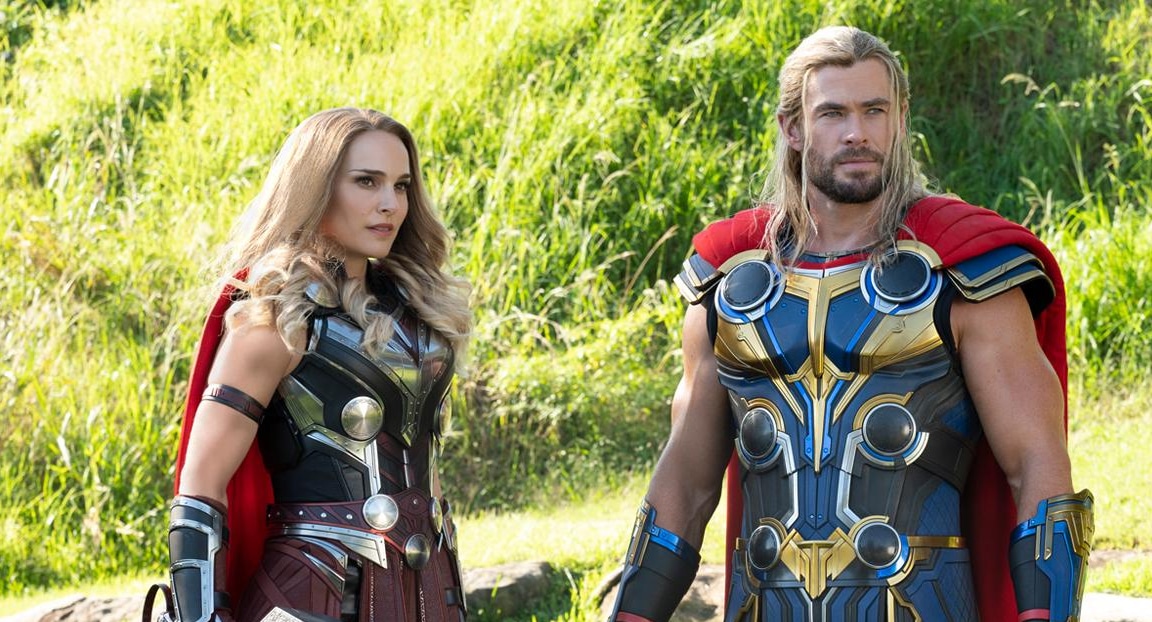
Eternals, Multiverse of Madness, and Love and Thunder each feel like they engage directly with this trope. Eternals features the franchise’s first sex scene between Ikaris and Sersi (Gemma Chan), presenting the two as star-crossed lovers across time and space, only to eventually reveal that Ikaris is a complete monster. Love and Thunder reintroduces Thor’s ex-girlfriend Jane Foster (Natalie Portman), teasing a reunion — only for her to die in his arms.
Multiverse of Madness confronts Strange with the marriage of his ex-girlfriend Christine Palmer (Rachel McAdams) to another man. She was the co-lead in his first movie. Even though Cumberbatch and McAdams don’t share any chemistry and the movies never give any sense that the two belong together, franchise conventions suggest they should pair up. However, they don’t. One alternate version of Strange is driven mad by the realization there is no universe where they end up together, as if he is entitled to her love because he’s the lead.
It is a small thing. However, taken across these three films, it feels like the MCU is engaging in a measured criticism of its own tropes — deconstructing its own weirdly sterile and obligatory romantic couplings. It also fits with the larger interrogation of the superhero genre and the broader introspection that has been simmering through Phase 4. There is a sense that the MCU is similar to Thor in Love and Thunder, taking some time to figure itself out.
